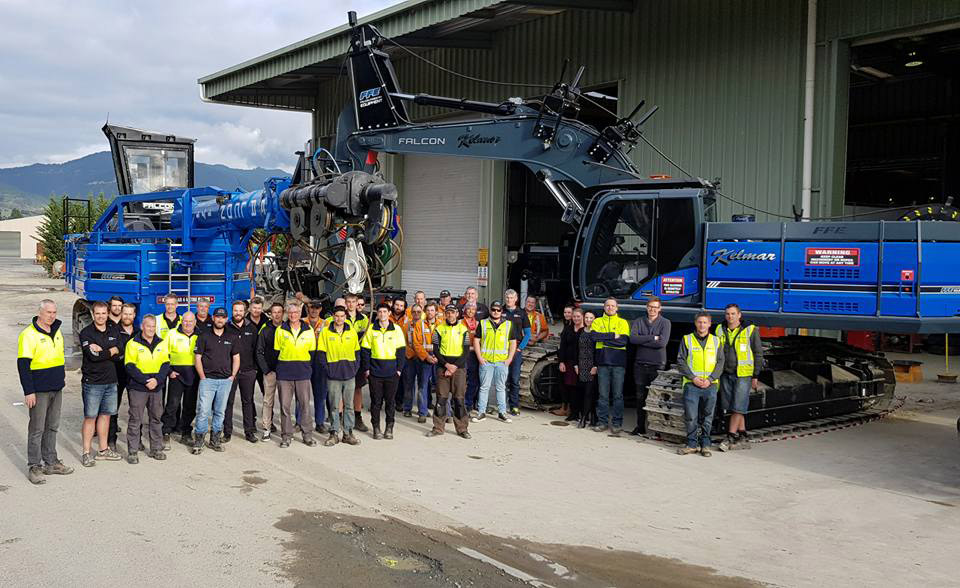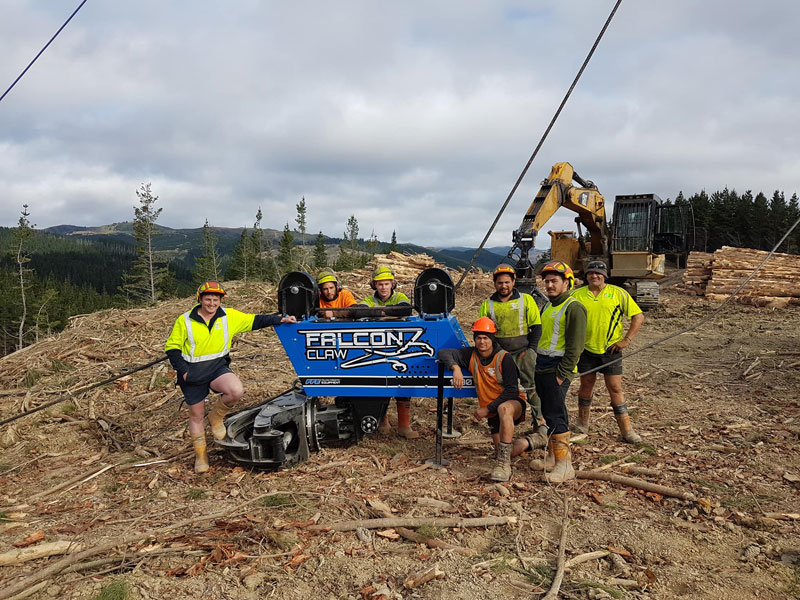You may have seen our recent announcement welcoming our new team member, Gerry French, to Intepeople. What you may not know, is that we ‘share’ Gerry with another local organisation, Hamish Fletcher Lawyers. Gerry is employed part-time by Intepeople and part-time by Hamish Fletcher Lawyers, adding up to his full-time capacity.
We have been involved in connecting and creating collaborative recruitment locally before, however, this is our first in-house experience of a ‘job sharing’ arrangement.
We’ll let Gerry explain how this engagement came about, followed by a Q&A with each party to share their experience and learnings through this talent sharing process.
We relocated from Auckland to Nelson in 2017 for lifestyle and a desire to live and belong in a regional community. In Nelson I worked for over three years as People & Safety Leader for Nelmac a local CCTO. During the period we engaged Intepeople and Intesafety to provide a range of support to the business and I always found them to be a highly talented and fun team to work with.
In terms of the job-share gig, that was the result of a whole bunch of stuff coming together. After Nelmac, I provided temp support for the Intepeople talent team as they were flat-out busy. I jumped at the chance to work with Melisa and the Intepeople Team.
At the same time, Intepeople were seeking a permanent full-time Talent Partner which I had expressed interest in applying. Around this time, local Leadership Coach Suzi McAlpine introduced me to Hamish Fletcher. Hamish Fletcher Lawyers were looking for an HR Lead to partner in the strategic cultural shaping, performance improvement and leadership development space.
So, there was potentially these two fantastic opportunities - Hamish Fletcher Lawyers & Intepeople - which presented a bit of conundrum. So, I had a coffee catch-up with Suzi, the conversation went something like, “what should I do?”
Suzi, being a fantastic coach, asked me lots of great questions and the upshot of that was, “Well, why can’t you do both?” That started the conversation with Melisa who was 100% supportive and helped shape a schedule that would work for both firms.
Chris: The main benefit is being able to access highly skilled and experienced people on a job-sharing basis that quite frankly you wouldn’t be able to afford otherwise. In our case, we have a very specific focus area for Gerry. The dedicated nature of that work means we are very targeted on how we best utilise his time with us.
Also, not all businesses have full-time work for an HR specialist. At Hamish Fletcher Lawyers we have grown considerably in recent years but the scale of the business is not yet large enough to warrant a full-time resource.
Melisa: It’s allowed us to access the great capability that Gerry brings to Intepeople. It’s also brought some diversity to our team.
Through this engagement it’s meant that we’ve kept Gerry in the region, we don’t want to lose expertise and experience like Gerry has from the region. From an Intepeople perspective, it’s important to keep strong talent in the region.
Chris: Just in getting into a good rhythm with the part-time nature of the role. Having set times for when Gerry is available for Hamish Fletcher Lawyers and in the office allows the rest of the team to plan their interactions with him.
Melisa: It was important to us that we had flexibility for both employers through the engagement process. The engagement needed to be a win-win for all three parties. As a result, Gerry works over three part and full days each week for Intepeople, ensuring continuity of service to our clients.
Chris: It’s good for businesses to think outside the box - we highly recommend the collaborative approach. There needs to be give and take between those involved to help manage the peaks and troughs of each business.
The job-sharing concept is also great for the person doing the work. It provides variety and stimulation and allows them to piece together full-time work across two (or more) businesses.
Culturally, the important thing for us is that Gerry is a full team member with an employment contract. He isn’t a contractor coming into the workplace.
Melisa: It’s a great benefit to be able to access good capability for any organisation and the engagement doesn’t always need to be in a permanent or full-time capacity.
For Intepeople that’s also been a driver in our Integig service. Enabling clients to access great talent in a contingent way allows them to scale their resources up or down in an agile way to ensure business delivery when it counts.
The way businesses resource themselves is changing and collaborative and contingent engagements present an excellent opportunity to ensure you have the right talent at the right time.
Client and candidate facing work don’t fall into ‘neat patterns’ so a straight split of days 3-2 wouldn’t work well. Yet, you do need to have a regular pattern for consistency.
The design we ended up with is two regular half days at both firms (Tuesday/Thursday), all day Wednesday at Hamish Fletcher Lawyers plus I alternate my Monday’s and Friday’s. It sounds confusing, but it’s working out.
Ha, yes, what was Michael Watkins quote in his book The First 90 days – “Starting a new job is like drinking from the fire hydrant.”
I would highly recommend spaced starting dates. I had a good six weeks of 100% temp work at Intepeople where I could focus on learning the role, getting to know the team, CRM systems and clients, and then started my role as Performance Improvement Manager with Hamish Fletcher Lawyers in early April. This was incredibly helpful in getting off to a great start with both firms.
I enjoy the opportunities both bring. With Intepeople I get to engage broadly with a range of candidates and clients, working on finding the best available talent plus providing HR support, and I feel I’m getting to know the Nelson business network.
My role with Hamish Fletcher Lawyers involves strategic partnering and deep work around defining the culture that will bring to life Hamish Fletcher Lawyer’s vision for being known as the region’s most caring legal practice.
I also get to experience working with two fantastic teams.
Balancing time and attention. Like everyone I’m motivated to do the best possible job I can, yet you can only be in one place at a time. So, whilst it’s important to bring focused attention, you still need to be flexible to ensure you can attend to things that may not fall neatly into the allocated time you have in one place or the other.
Job-sharing and other forms of flexible working arrangements will continue to be a feature for the future of work. Selecting roles that are in different industries builds a range of relationships, opportunities and perspectives you might not otherwise get.
As mentioned, spacing the start date and taking the time to build competence in one role before adding another into the mix has been helpful.
____
There are many benefits to this arrangement for all involved. Sometimes, a full-time resource isn’t warranted, which is the case for Hamish Fletcher Lawyers. For the employee, working across two organisations offers variety and the opportunity to build a range of relationships and perspectives.
The way businesses resource themselves is changing. This successful recruitment initiative highlights the huge potential for more local businesses to talent share in a similar, collaborative way. Remember, capability doesn’t always need to be in a full-time or permanent capacity. All it takes is a little thinking outside of the box!
Provided it is managed well and all parties are flexible when it is needed, this style of job-sharing can be a real success – as we’ve directly experienced.
We invite you to discuss recruitment options with our team by contacting us here.

We live in a time of profound change and disruption. Our brains are not wired to deal with this - we think in a way about continuous improvement with small changes.
We don’t imagine that things can change so quickly.
The world of work is part of this rapid change. Robotics, automation, artificial intelligence (AI), machine learning and 3D printing are all changing the way we work. This current dynamic environment is also amplifying the trend towards the gig economy.
The gig economy is where employers contract freelancers to complete a certain job, as opposed to hiring permanent employees. This offers certain flexibility and freedom for both the businesses and the individual.
Initially, the growth in the gig workforce came in the form of Uber drivers and food delivery. This has changed as specialists such as engineers, financial managers and data analysts join the freelancing economy.
Businesses can hire specialists to complete specific tasks/projects, undertake an interim role or provide input at a strategic level. They may decide to do this as they can access skills they could normally not afford or they do not require these skills on a permanent basis.
The current pandemic could prove to be a pivotal point in the 'gigification' of knowledge work, as businesses are attracted by the prospects of the cost savings that the gig economy model offers.
People who chose to work independently are typically more satisfied - and not only because of greater flexibility.
They are more engaged in their work versus traditional jobholders, relish being their own boss, and enjoy greater creativity than typical nine-to-five workers.
For businesses, securing gig workers still comes with its challenges if you do not know where to find them or cannot be sure if they have the expertise they claim to or if will they be the right fit for your team.
Intepeople can support businesses with the recent launch of Integig - a platform that brings capabilities and businesses together faster with a hassle-free approach.

Contact Rosie to enquire, or find out more about our Integig Executive Contracting service here.

Nelson Tasman is a hotbed for extraordinary business stories, and at Intepeople we are privileged to support so many clever local businesses diversify and grow their teams.
One such business we work with is local forestry equipment manufacturer DC Equipment. They are leading the way globally in creating a safer and more productive steep slope logging industry, from their headquarters and manufacturing facility in Brightwater, and their second manufacturing facility in Santiago, Chile. Recently, we assisted them with the recruitment of a new position in their production team.
We chatted with Andy McKinstry, Manager, and Pedro Ivo Costa Vaz, Production Planner, at DC Equipment, about their recruitment journey with Intepeople and what it’s like to live, work and run a global business in Nelson Tasman.
A family owned business, DC Equipment is driven by a vision to bring safety and efficiency to the forest industry. Andy describes DC Equipment as an exciting place to work – a relatively young company that is expanding and growing, with a “remarkable set of products that we believe in.”
“We are not PC or a Google/Apple type company,” Andy explains. “Sometimes we swear and get passionate.”
Their team is diverse – made up of design engineers, IT professionals, hands-on mechanics and skilled fitters and welders. With more than 65 people in their Brightwater team alone, they’re regularly producing their current range and developing new products.
Employing a diverse mix of nationalities they also have a high proportion of women working in the business compared to many forestry engineering-based firms.
Andy admits it can be hard to find skilled workers in Nelson, especially with production experience, but feels they “are lucky to have a good group of people involved in the business.”
With DC Equipment’s major export markets being the USA, Canada, Australia and Chile, it’s no surprise that logistics and production planning is a significant aspect of the business.
In 2019, DC Equipment had an opportunity for a Production Planner, and with the ideal candidate for this position requiring a specific set of skills and experience, Andy engaged Intepeople to recruit for this position.
“We have used Intepeople before to fill positions and we have found them to be very thorough and they have been successful in bringing the right people to us,” explains Andy. “They have taken the hassle out of the recruiting process and have had a wider spread of people than traditional advertising.”
One of our clever Talent Partners, Odette, took on the recruitment for this role, which covered our full-service recruitment package from advertising the role and shortlisting applicants, through to initial interviews, reference checking and final face-to-face interviews at DC Equipment’s Brightwater head office.
“I found Intepeople terrific and they kept us involved throughout the process”
- Andy McKinstry, DC Equipment

While advertising the role, Odette received an application from Pedro, originally from Brazil and living in Auckland at the time.
Highly educated with a master’s degree in project management, bachelor’s in manufacturing engineering and level 4 in naval machines, Pedro also brought with him more than nine years of extensive hands-on experience in industrial/manufacturing planning and scheduling from the shipbuilding industry.
Keen to enjoy the New Zealand lifestyle, Pedro had spent two years developing his language and professional skills in preparation to successfully work here.
Discovering the Production Planner position with DC Equipment, Pedro felt it was an unmissable opportunity to reengage in a planning role and challenge himself in a new field.
Having originally moved from Brazil to Auckland in 2017, then moving to Nelson in 2019, Pedro admits his new life in Nelson took a little getting used to at first.
“My first week was a little bit difficult – new job, new city, everything was really new,” explains Pedro. “However, DC allowed me time to settle in the city, find a place to stay and all the things that need to be done when you are moving from one city to another.”
Pedro compliments DC Equipment on their comprehensive induction, and support from his colleagues who really helped him to settle in and understand the company’s processes.
“I have never lived in a small town before, but after you start knowing the community and all the different activities you can do, this feeling has gone away,” Pedro says. "Nelson made me feel welcome and has been treating me well so far."

Image credit: NelsonTasman.nz
“Nelson made me feel welcome and has been treating me well so far.”
- Pedro Ivo Costa Vaz, DC Equipment
Keen to live and work in Nelson Tasman? Join our Talent Bank here.
Looking for recruitment services in Nelson Tasman? Contact us here to discuss your needs.
‘Attracting the Best Talent with your Employee Value Proposition’ was originally published in the Marlborough Chamber of Commerce Voice Magazine – Issue 04.
In the ‘war on talent’ facing employers today, developing an all-encompassing Employee Value Proposition (EVP) is more important now than ever before – to attract the best talent and engage and retain the employees you’ve already hired.
Your EVP is unique to your business. It should reflect your company culture and align with your overall business strategy. It’s what distinguishes you from your competition and what attracts people to want to come and work for you and not “them down the road.”
Gone are the days when an attractive job offer comprised a salary, annual bonus, paid parental leave, flexible working options and support to complete further study. These revolutionary ‘perks’ of days gone by are just the norm today and in some cases, minimum standards employers must provide to their employees.
The demographic shift in the global workforce is presenting unique and complex challenges to employers as the potential for four generations working side by side is becoming more prevalent. With this, employers need an EVP that appeals to this diversity and the multigenerational demands it brings to the table.
Research is vast in this area – there isn’t a ‘one stop package’ sitting on a shelf all ready for purchase. However, what the research and evidence tells us is that having a combination of factors is important.
As the cost of living rises and wages struggle to keep up, employees are feeling it, and disposable income is fast becoming a thing of the past.
To address these very realistic concerns, some companies are introducing benefit programmes. For example, discounts in grocery stores and stores that supply clothing, electronics and household items resulting in employees stretching their disposable income and relieving pressure on every day costs of living.
Introducing a programme that rewards employees for hard work and commitment through vouchers and tickets to sports events, cinemas and other entertainment occasions such as concerts has become very appealing and is easy and simple to implement with today’s online reach.
Employees more than ever want to ‘feel and see’ that what they do in their day-to-day job contributes to the overall success of the company and has ‘meaningful’ benefits to society and the environment.
Equal pay and job opportunities, flexible working arrangements, having a ‘voice’ and access to management to share ideas, visible internal career progression, learning and development opportunities and the latest technology are all elements to consider when defining your companies EVP.
Developing your EVP doesn’t need to be an onerous, expensive or exhausting process. however in this highly competitive talent market, it’s what will differentiate you from your competitors.
Ask yourself and your employees, “Why should I work for this company and not somewhere else? What’s in it for me?”
Consider all elements including compensation, benefits, career, work environment and culture. Consider the diversity of your workforce. Listen to their ideas and understand what they want and see as valuable.
To discuss how we can help you create a successful EVP for your business, contact one of our HR Partners.
We always love to see a standout LinkedIn profile - after all, we are in the business of recruitment!
But LinkedIn isn't just for recruiters and jobseekers - it is becoming an increasingly important tool for employer branding too.
Have you ever considered that someone applying for a job at your company might scan your personal LinkedIn profile first? Your profile can give job seekers an impression of what the company culture is like and the people they might be working with.
So whether you're looking for a new role, looking to attract talent to your organisation, or simply keen to up your LinkedIn game, read through our LinkedIn profile tips and ask yourself - is your profile sending the right message?
No, it doesn't need to be from a professional 'photoshoot' but it does need to be recent and ensure you look well-presented, friendly and approachable. Like we talked about in this article, a pouty 'selfie' is not suitable, nor is a group shot hanging out with your friends having a few drinks. Use your common sense!
Cover images are an under-utilised employer branding opportunity. Why not create one with your company branding, for all team members to use?
If you don't have a branded image to use, try uploading an image or graphic of your own. We invite you to be creative, but keep it professional!
Regardless of whether you're looking for a new job or not, it's always a good idea to keep your profile information up-to-date.
Take a few minutes to scroll through your LinkedIn profile from top to bottom and complete any missing or out-of-date details.
Your summary is a great opportunity to highlight your skills, expertise and experience. Our favourite summaries are concise (don't waffle, keep it relevant), easy to read and show a bit of personality. We want to get an idea of who you are.
An extra tip that can be helpful, particularly if you're looking for a job - include keywords in your summary . Recruiters (like us!) use LinkedIn to search for people with relevant skills and experience. Including certain search terms increases your chances of popping up in our search for talent. You never know, by including the right keywords, you might even be headhunted...
If you haven't already done this, head to your LinkedIn profile and click on 'Edit public profile & URL' up in the top right of your screen. This allows you to personalise your URL from a series of numbers to your name, for an extra professional touch.
When was the last time you made a new connection on LinkedIn? LinkedIn is one of the easiest and most effective ways to stay connected in your professional networks.
Try searching for people you work with (e.g. clients, suppliers, partners) as well as people you know from previous roles or school/university. Make sure you're connected with all of your colleagues, too.
LinkedIn also has a 'people you may know' feature that is useful to scroll through from time to time. You never know who might pop up that you could connect with.
On the same wavelength as connecting with individuals, make an effort to join relevant groups on LinkedIn and follow company pages that you're interested in, too. You'll then see their content pop up in your newsfeed and can easily engage with it.
Are you taking a few moments each week to post and engage with content on LinkedIn? The more you and your team create and join conversations on LinkedIn, the bigger the opportunity for your company's employer brand and LinkedIn presence to grow.
If you're a jobseeker, engaging more (i.e. liking, commenting, sharing posts) is a great way to become more visible to companies you potentially might like to work with (and people from those companies).
Increasing the frequency of your posting on LinkedIn is a great way to establish yourself as a thought leader and increase your company's online presence.
Just remember when you're posting on LinkedIn that you're talking to a community of professionals. This isn't the place to post about what you had for dinner, or how cute your new puppy is (though we're are sure it is very cute). Keep your posts relevant, professional and work-appropriate.
Recommendations can be really helpful, especially if you're looking for a new job. They help to show that your skills and experience are genuine and that you're a nice person to work with!
Likewise, if someone is researching your company as a place to work, if they can see you have great recommendations as a manager, they'll feel more positive and confident about accepting a role there.
It can take time to build up recommendations, so even if you aren't currently looking for a new job, the best time to start reaching out to people to ask for a recommendation is now.
When you receive a recommendation? Don't forget to personally thank the person, and remember it is polite to write them a recommendation in return.
Why not carve out 5 or 10 minutes today to start polishing your LinkedIn profile? And while you're there, why not head over to Intepeople on LinkedIn and follow our company page.
Sometimes there is more than one way to approach recruitment, such as this innovative ‘win-win’ way one of our recent placements evolved between two collaborative Top of the South companies.
Earlier this year Emily, one of our team of recruitment consultants, facilitated the placement of a Lean Implementation Manager, Tim Ward, into roles at Pic's Peanut Butter and SeaDragon, where Tim's time, senior skillset and expertise is shared by the two companies.
It’s a great example of two businesses thinking cleverly and partnering in an innovative way to access a permanent senior skillset - without a full-time cost outlay.
There is some amazing talent here in the Nelson region that sometimes goes to waste because businesses cannot afford a full-time staff member with certain capabilities. This concept could be very useful for SMEs in the region to harness those skills that are available here.
- Tim Ward, Lean Implementation Manager
Originally, Intepeople began recruiting for a full time Lean Co-ordinator for Pic’s Peanut Butter.
When Emily saw Tim’s application come through she could see he had a very relevant set of skills and experience – albeit at a much more senior level. Despite his skillset being very senior for a Co-ordinator position, she felt it would be valuable for Stuart Macintosh, General Manager of Pic’s Peanut Butter to meet Tim.
It was from this meeting between Stuart and Tim that the idea of splitting the role across two organisations evolved.
We'll let Stuart and Tim tell the story from here...
We were 12 months into implementing Better By Lean at Pic's Peanut Butter and had a vacancy for a lean Co-ordinator/Facilitator to provide the additional resource required to support and guide Lean Improvement initiatives.
When I interviewed Tim I realised that he was an extremely experienced Lean practitioner, and whilst over-qualified for the Co-ordinator position could see he had the experience and capability to add significant value in-house to our Better by Lean implementation.
SeaDragon are at a similar stage to Pic’s and I explored with Nevin Amos, CEO of SeaDragon, the concept of a Lean Implementation Manager job share between the two companies.
As a Lean expert Tim is highly organised and capable of balancing the job share between the two companies - both organisations benefit from his experience and passion for Better by Lean. In addition we also appointed internally a Lean Co-ordinator who reports to Tim.
Successful implementation of Better by Lean is highly correlated to resourcing the programme so that Lean thinking progressively becomes the way we think and do things. The Lean Implementation Manager job share position provides us with an experienced resource in-house.
For SME’s it can be hard to justify the cost of the experienced resource you require on a FTE basis. A job share concept like this makes the step more manageable, particularly in the short-term.
No, I can’t say that it did. I’m a more traditional, loyal, employee-type person who has only worked at a single business at a time! But when this opportunity came up, I was excited about the concept of working with two different companies, and working within two separate cultures. This is particularly because business culture intrigues me, but also working to effect change within existing cultures is something I’ve become reasonably successful in doing.
I’m lucky that it’s made sense to divide my work week in two with a consistent pattern - I’m at Pic’s Monday to Wednesday and at SeaDragon on Thursday and Friday. At both businesses, the role is similar - I’m there to help the various teams get better at what they do. So my days usually consist of meeting with the operational and project teams, identifying what their current problems and issues are, and then coaching the teams in different methods of approaching each of the situations.
I was originally concerned that there might be the need to “swap days” around a bit, leading to frustration around availability, but that hasn’t needed to happen.
Obviously, there is an inescapable need each time to get up to speed with what’s been happening with the teams in my absence, especially in the case of SeaDragon, where essentially I have a “5 day weekend” every week. However, the work structures we’ve put in place allow me to get a good picture early of how things are going and where I can be of most use each week.
Psychologically, it’s been interesting being aware of my “non-work thinking time” - outside normal office hours when I’m thinking about work things. I seem to naturally evenly distribute that processing time, rather than only think about one business or the other.
Firstly, it is an amazing experience. I get a lot out of helping teams develop their work processes, so to be able to do that for teams across two businesses is great.
Second, set in place some simple structures, e.g. regular catch-ups with your managers and the people you work with each week, so you’re able to get a good picture of what your focus needs to be.
Thirdly, work out what your approach will be regarding the divide between the roles. If you’re a good multi-tasker, you may be able to keep up with the emails/communications from both businesses at all times. I’m not so good on that front, so when I’m at each business, I focus entirely on that business for that day.
There is some amazing talent here in the Nelson region that sometimes goes to waste because businesses cannot afford a full-time staff member with certain capabilities. This concept could be very useful for SMEs in the region to harness those skills that are available here.
This successful recruitment initiative highlights the huge potential for more local businesses to 'talent share' in a similar, collaborative way. All it takes is a little thinking outside of the box!
We invite you to discuss recruitment options with our team by contacting us here.
Communication as a candidate – what part does this play when you're applying for a job?
Answer: a HUGE part!
Communication of who you are and why you should be considered for the role underpins the entire recruitment process. It is a key factor in getting you that step closer to your dream job.
With the exception of a few very niche positions, gone are the days when 'technical' fit trumped ‘team/company/cultural’ fit.
Who you are as a person goes hand in hand with your technical ability. How you communicate this when you're applying for a job is paramount - on paper, online and in person.
Let’s start with your Cover Letter and CV. Communicating well in print is crucial as this is often your first impression when applying for a job.
In a recruitment process where you are one of multiple applicants, this is your chance to highlight yourself as a serious contender.
Two important words to keep in mind when crafting your Cover Letter and CV… tangible detail.
Recruiters and prospective employers want to read these documents quickly, easily source and digest the important information and finish up with very few questions at the end.
Include tangible detail in your working history – dates, facts, figures, any information that sets a scene and gives the reader insight into the scale of what you were doing.
For example, you were employed 2016-2017. Was that January 16 – December 17, or December 16 – January 17? A small detail, but possibly a big difference in work experience.
A lengthy and laborious CV will lose most audiences. So will reading ‘attention to detail’ and ‘ability to build rapport’ repeatedly under each job heading. Let’s stick to the facts and not duplicate anything unnecessarily.

Yes, a CV needs to demonstrate your work history, technical capability, fit for the role in question, qualifications, and eliminate questions. However, I wouldn’t underestimate the power of an interests section.
Are you sporty – team or solo sports? Daring and into skydiving, a volunteer firefighter or perhaps you breed miniature horses? Family are your big passion and/or maybe you enjoy trying a new winery for lunch once a month.
Keep it brief and to the point, but a few bullet points that give the reader some idea of YOU can really communicate how you differ from the pack.
Social media cannot be overlooked as this is playing an ever-increasing role in our day to day lives, the recruitment process being no exception.
Any of your online profiles are bound to get a look-over from a prospective employer at some part of the process - so when you're applying for a job, have a think about your communication online too. Are you portraying yourself accurately or in the best light possible?
Nail the Cover Letter and CV and you are one step closer to a face-to-face interview. The interview is your chance to put your best foot forward in person and could be the deciding factor as to whether you’re offered the job.
Communication on all fronts – presentation, talking through your CV and experience, what you know of the position/company you’re applying for, your body language and being able to describe who you are as a person and what you’re looking for in a role are all important so be sure to consider the full package as you prepare.
Here's some useful tips on how to prepare for a job interview.
You don’t have to be a whizz at public speaking to communicate well in this process – I most certainly am not! Everyone is different and let’s face it, interviews can make even a confident communicator want to run for the hills.
As long as you are trying and can show that you have a genuine interest in the process, I want to get to know you. Tell me you’re a bit nervous if you like! Or if you like working in large teams, or in the office out the back solo. That’s fine by me.
As a Talent Partner, I’d have to say that a part of my job I thoroughly enjoy is getting to know so many different people. I want to know the real you so that we can work out the best path forward to finding you the best possible fit in a role/team/company.
Last but not least… there is no such thing as a stupid question. If you’re unsure of anything in your job search, please communicate this! We’ll do our best to help 🙂
Written by Intepeople Talent Partner, Tania McCaa

Employment Branding – “Why” it Matters
The recent Nelson Tasman Chamber of Commerce Luncheon presenter Z Energy CEO, Mike Bennetts, left me feeling inspired.
The theme was “why” we do things around here - what makes Z distinctive as a company and a brand, what they believe in, value and stand for. Plain English, no fancy words like “innovate” - just down to earth, relatable stuff.
Afterwards, I checked out Z’s website to see if it was just fancy talk. Sure enough, there’s a “why” tab packed with great info aligned with their brand.
Dig a little deeper and you find “The Z Why” Document.
This got me thinking about employment branding - or the lack of it - and what a missed opportunity it is in the war for top talent to join businesses in their quest for success.
Customer experience has been around forever but what about candidate experience?
We forget that candidates are people with needs and wants just like customers and they’re becoming more discerning. Top talent have options and they know it. They also know they’re taking a risk – what if the reality doesn’t live up to the hype?
Pretty standard stuff, right? But how easy do you make it for candidates to find this information?
Think about your last weekend trip to Wellington. I’m guessing you hopped onto booking.com, checked airlines, the ferry and rental car providers, looked at restaurants and then asked friends for recommendations.
Top candidates are doing exactly the same thing - about you, your team, company, brand and the role. They download the ad, check out the job description, search your website and careers pages, news articles, companies office info, board reports, social media channels (personal and company Facebook, LinkedIn and Instagram pages) and talk to their networks to see what the real story is. Think 'TripAdvisor.'
So next time you’re looking for a talented new person to join your team, take some time to think about your employment branding and value proposition as an employer.
If you think you could do better, put it on your “to do” list today – it matters.
Written by Jessica Rolinson, Intepeople Talent Partner.

You’ve just had the call – after sweating over your CV and crafting an amazing cover letter you’ve made the cut and been asked to come in to interview for your dream job. Time to celebrate… then it dawns on you – you actually have to go in, sit in front of a bunch of strangers and be asked a series of seemingly random questions.
That's right, the dreaded job interview.
I interview people all the time and I can confidently say no-one likes job interviews (well, some people say they don’t mind them but they are probably the same people that say they love exercise and enjoy exams) so I am not sure that I believe them.
However, just like exams and exercise, it’s possible that by carefully preparing for a job interview the whole experience will be much less excruciating, and even better you’ll increase your chances of getting your dream job.
Here's some of my tips for preparing for a job interview.
This is the number one cardinal rule. There is nothing truly more disheartening than meeting a candidate who can’t “quite remember” what the role is or who the organisation is.
Do as much research as you can. Read the ad, dissect the job description, google it, talk to current employees. If you are working with a recruitment company don’t be shy about asking for tips around what the employer wants and may ask.
Then, just as importantly, think about how your skills and experience will apply to this role. The more you think about and consider it, the easier it will be to articulate in the interview.
Once you have a good knowledge around the role and organisation you need to turn your mind to preparing for the job interview itself. Of course, interviews can come in all shapes and sizes but generally, they follow a rough sequence.
There are a variety of these – but most often they sound something like “Tell me about yourself?” or “What is it that you think you can bring to this role?”
These questions are about first impressions; the interviewer wants you to paint a picture about yourself. This is your elevator pitch - lead with your strongest selling points. Be concise, be relevant and be positive. This sets the scene for the interview so it’s not the time to be modest or to ramble.
These will be the role specific questions, which delve into your skills, experience and capabilities. Interviewers will ask about specific skills or capabilities relevant to the role. This could be things such as attention to detail, people management, project management or sales. They want to hear examples from your work. For example if they ask about your sales experience, they want to hear how you increased sales, by how much and then how this impacted the business.
Once again, preparation is the key. The basis for these questions should come from the job description but if you don’t have a job description you’ll be able to get a good idea from the advertisement. When preparing for a job interview, try and think of at least one good example for each capability they may ask about.
Generally, interviewers like to close with some light questions to round out their picture. Hopefully by this stage you’ll be feeling more comfortable and, depending on how chatty your interviewer is, you may have been able to glean some ideas about what is really important in the role which you can weave into your answers. There will also be questions about things like notice periods and referee details so make sure you have prepared for these.
Most importantly be prepared, be positive and sound like you are genuinely interested in the role.
Good luck out there.
Written by Emily Bisset, Intepeople Talent Partner.
It’s really exciting to see a number of new HR initiatives being offered online. In our last blog we talked about employees being able to rate employers. You can check it out HERE:
This week I was intrigued to read about a new site where you can use quizzes as part of your selection process to narrow down applicants by asking them a series of relevant questions to ensure they will fit at your company.
This site is called wierdlyhub.com
Read a bit about what they do from this Stuff article:
With the use of Facebook, LinkedIn and other social media sites as well as more traditional methods to advertise your role – Trademe, Seek and the newspaper - you can have candidates coming in from many places.
This is when your selection criteria and processes kicks in.
Traditional Selection processes include:
Weirdly offers another string to your selection bow. Especially in the cultural fit side of things which we all know is critical.
Some initial thoughts on using this new tool includes:
Nothing is more powerful than a properly run interview with follow up in-depth reference checking.
But if you can use this tool to whittle down your shortlist at minimal cost – I say give it a try…
And if you do – drop us a line and let us know if it worked for you or not – our community of readers would love to hear the feedback.